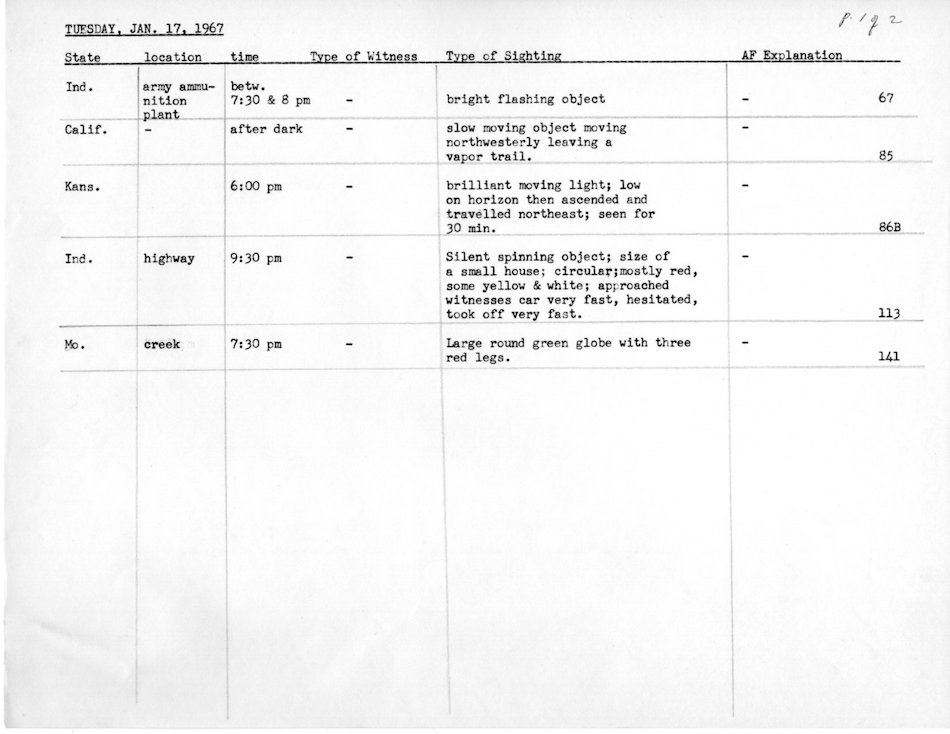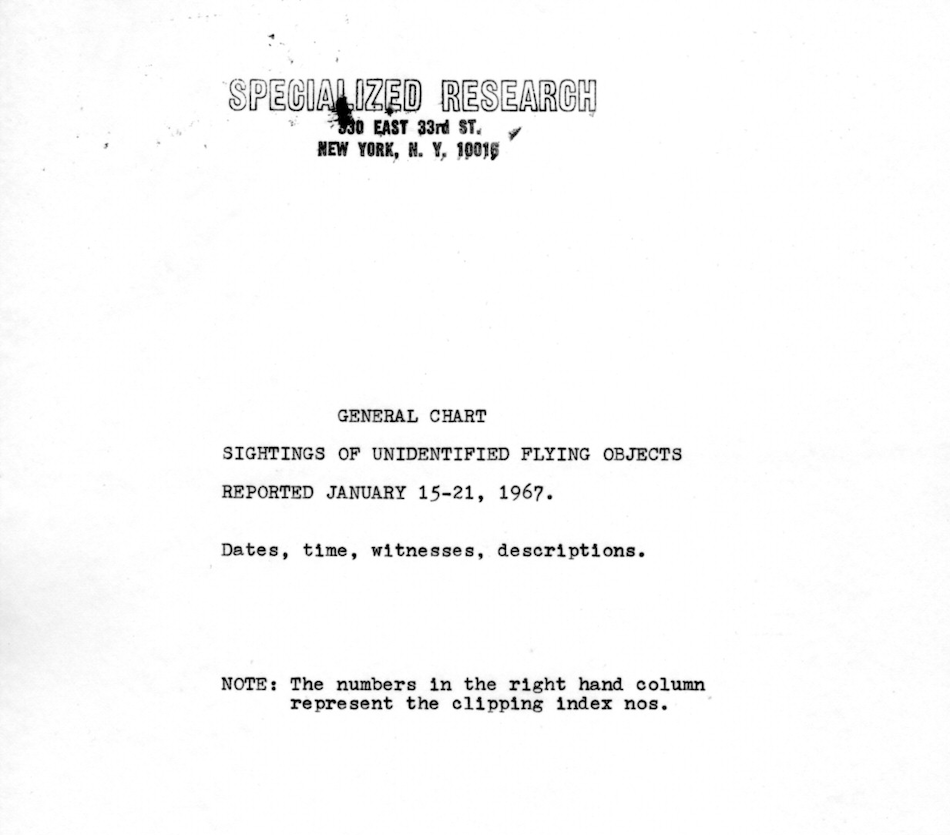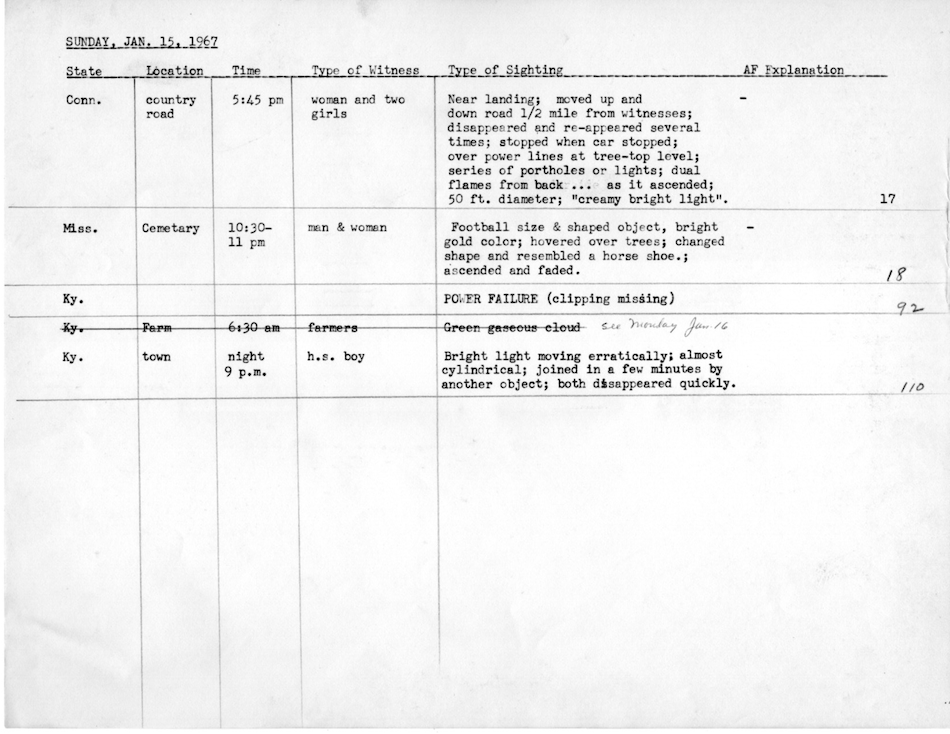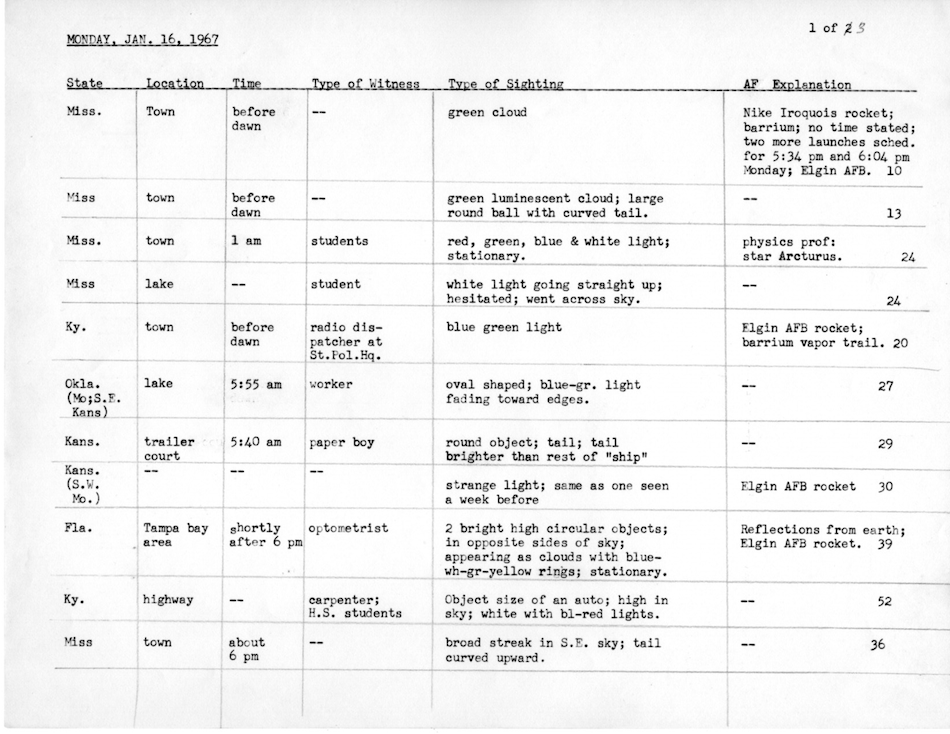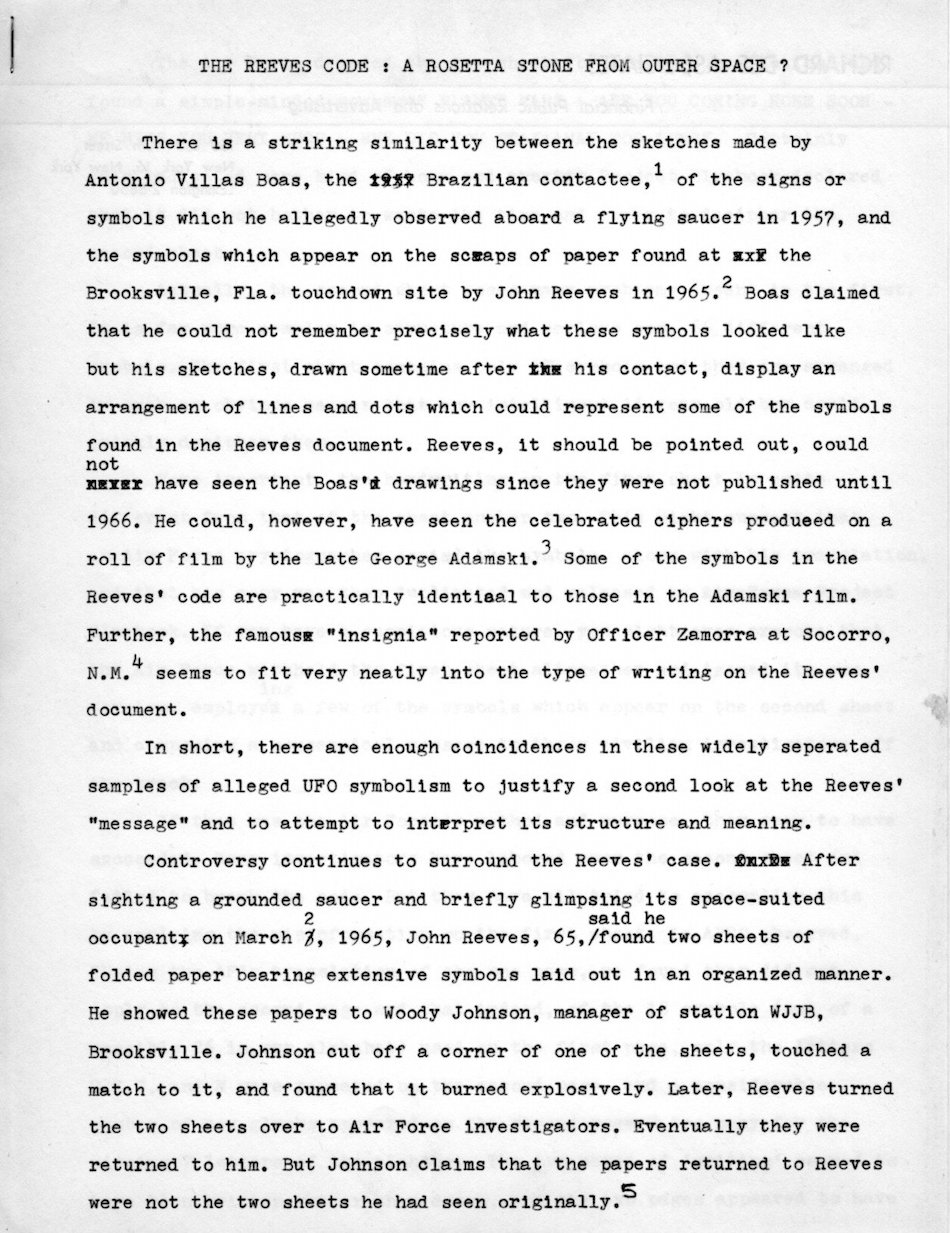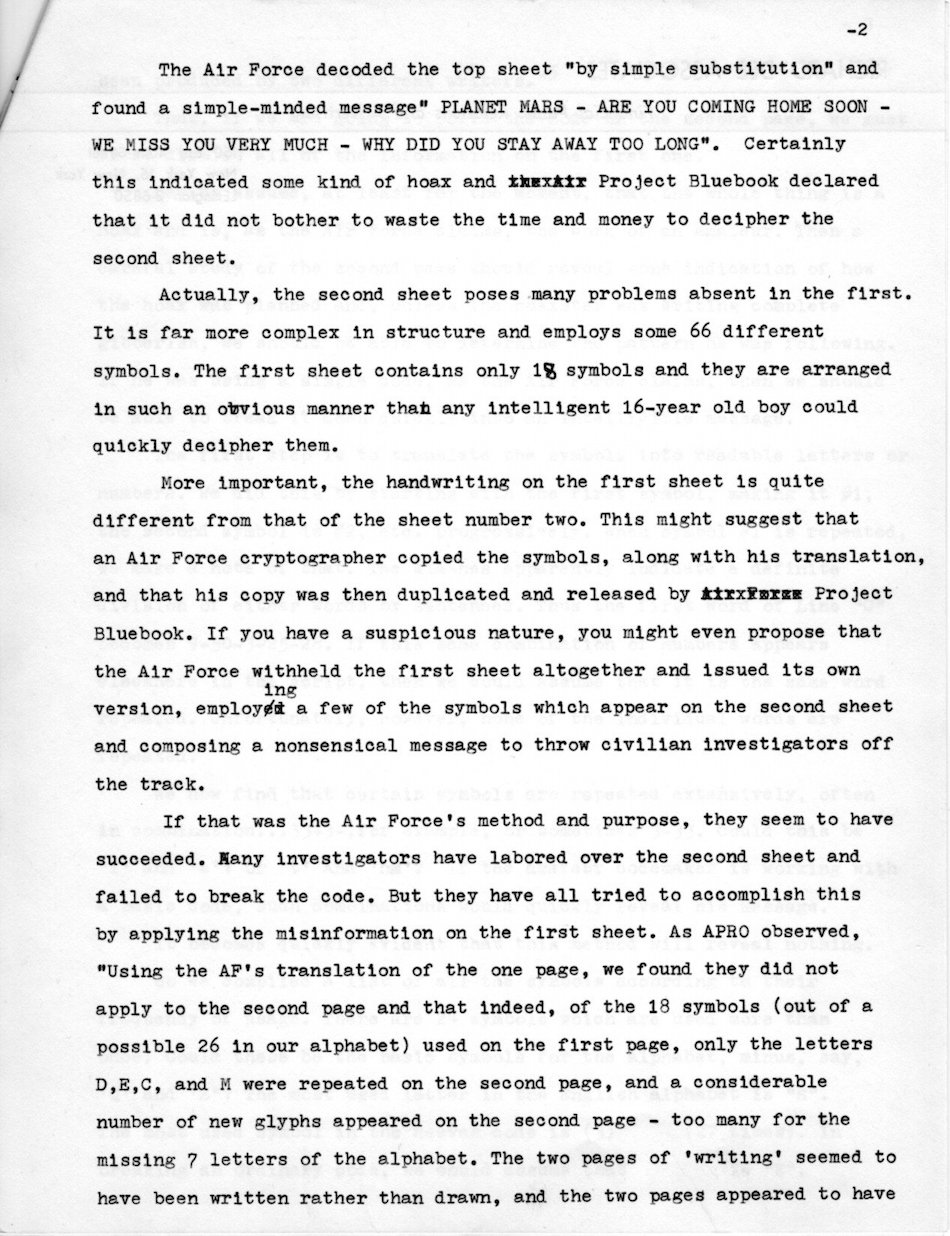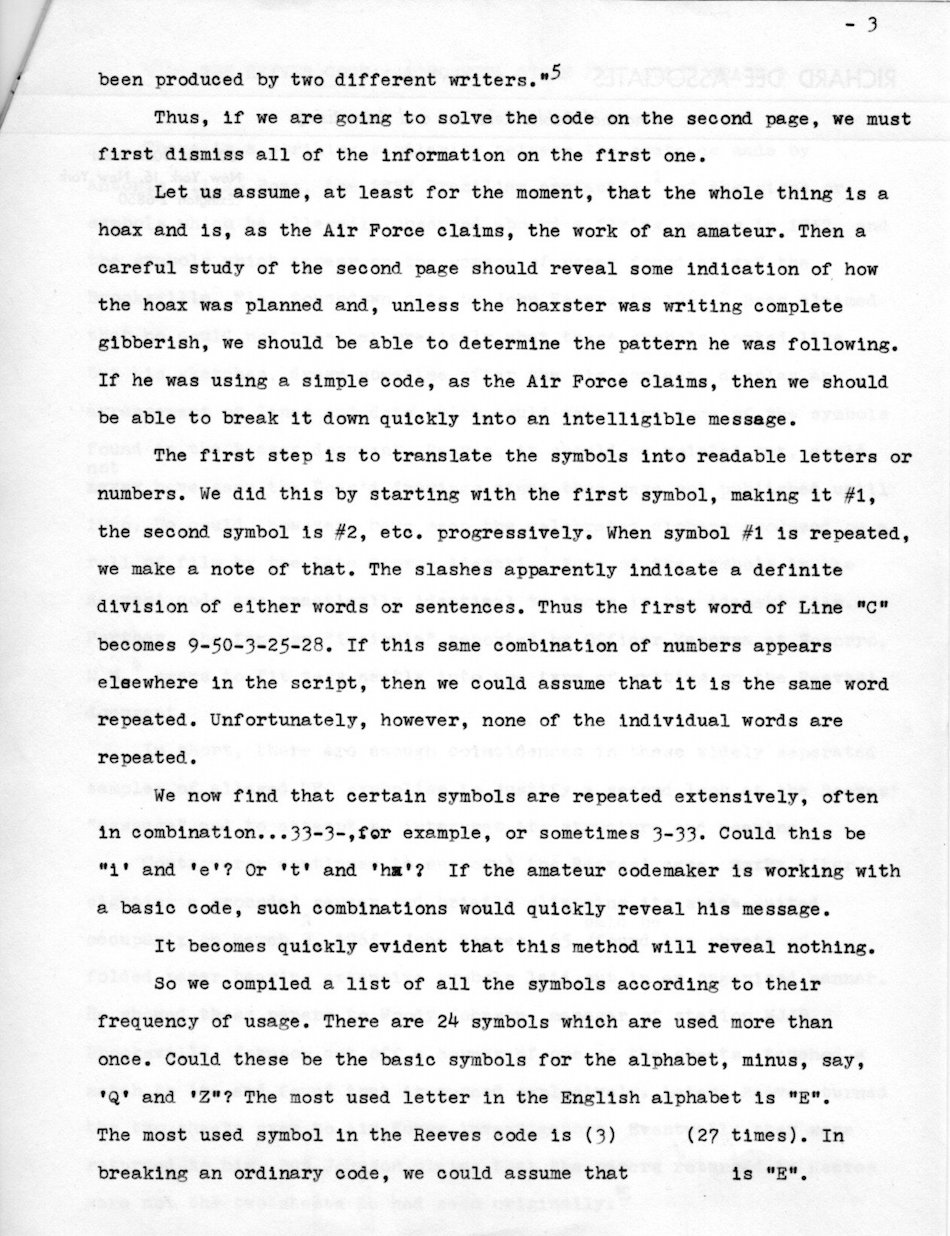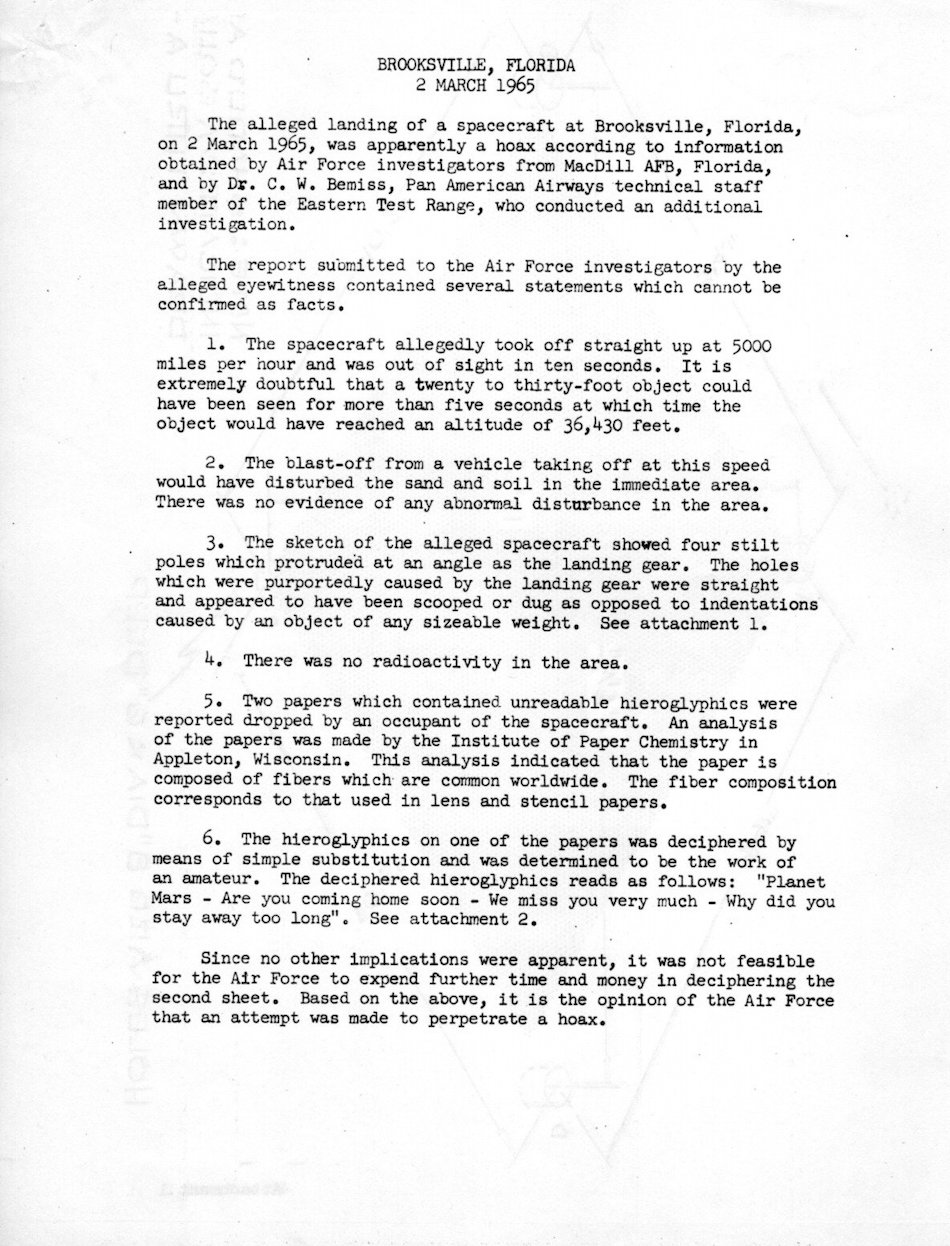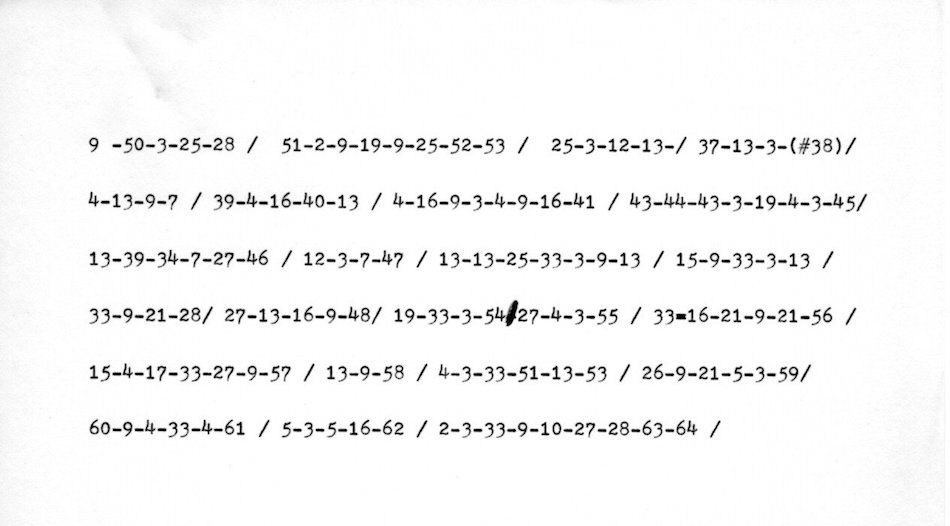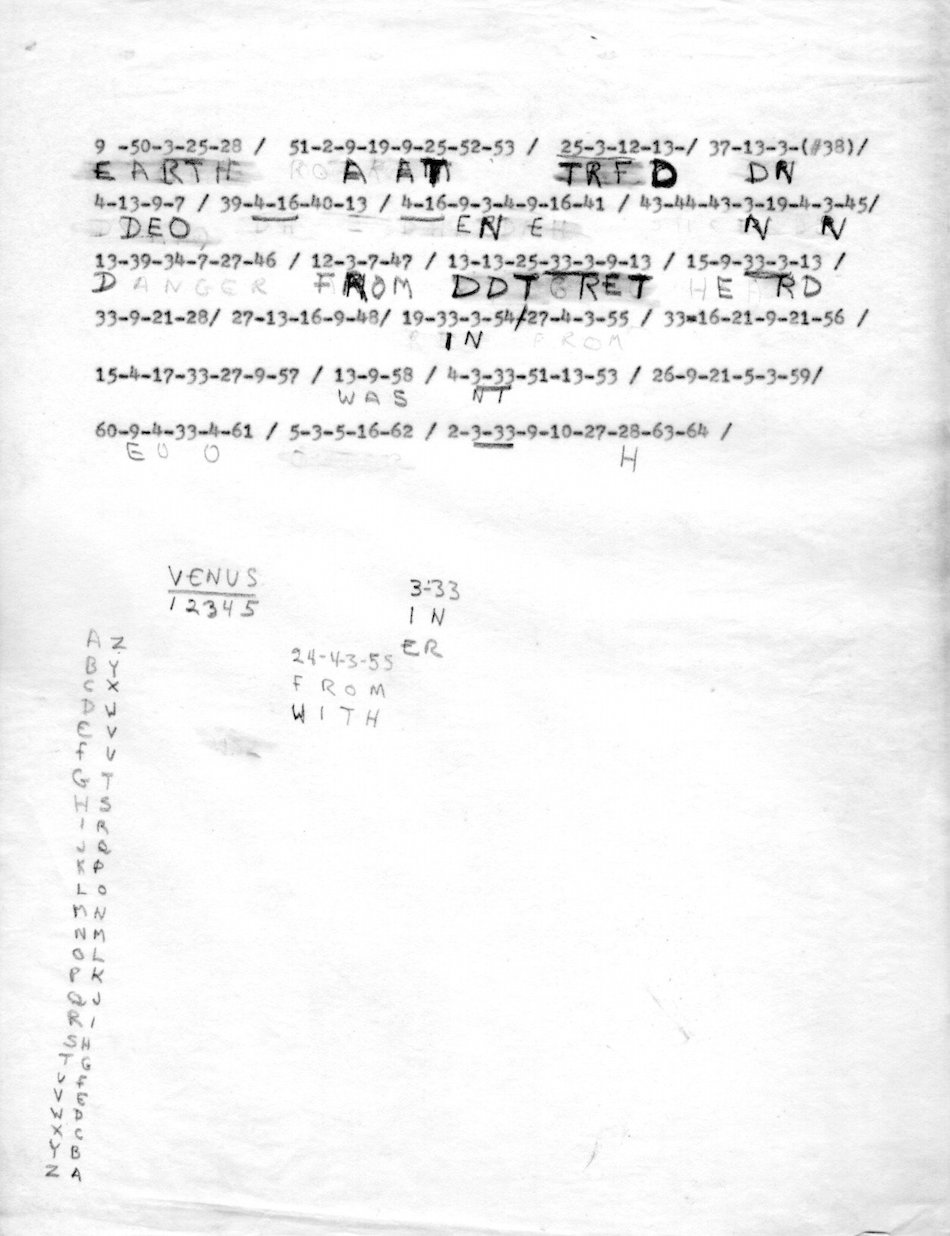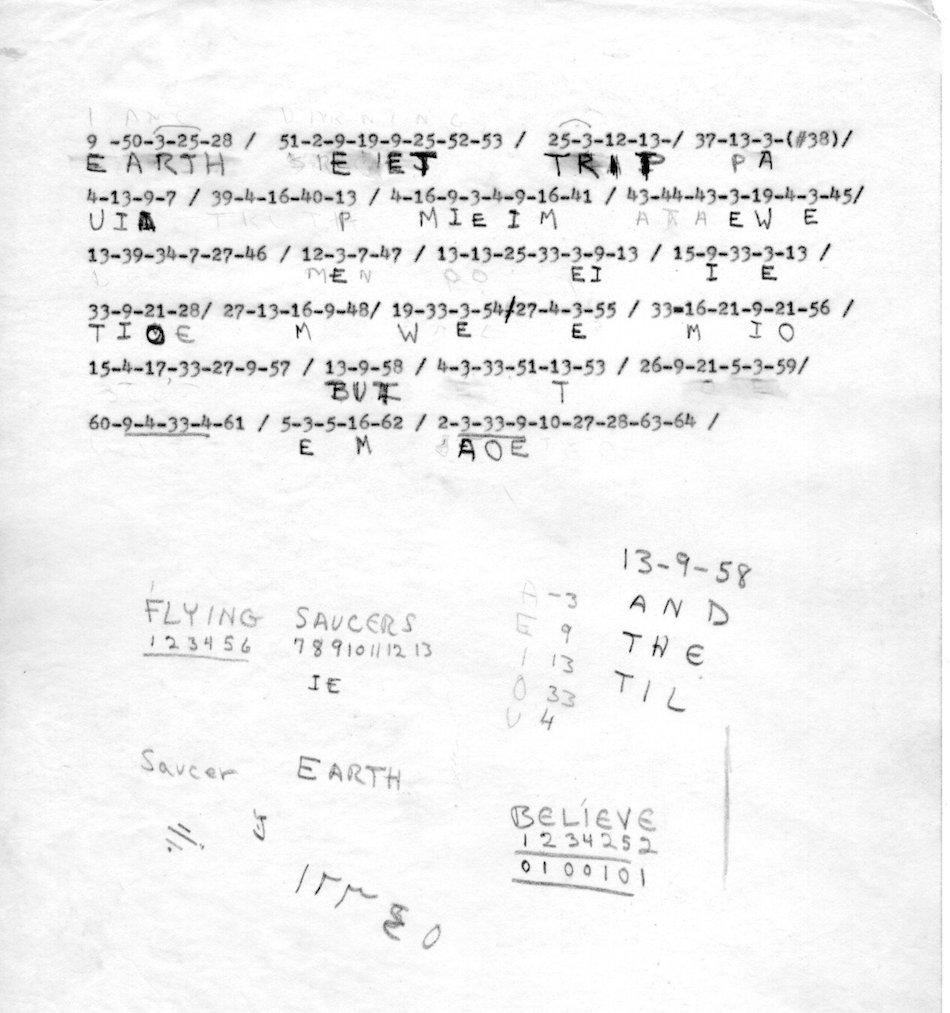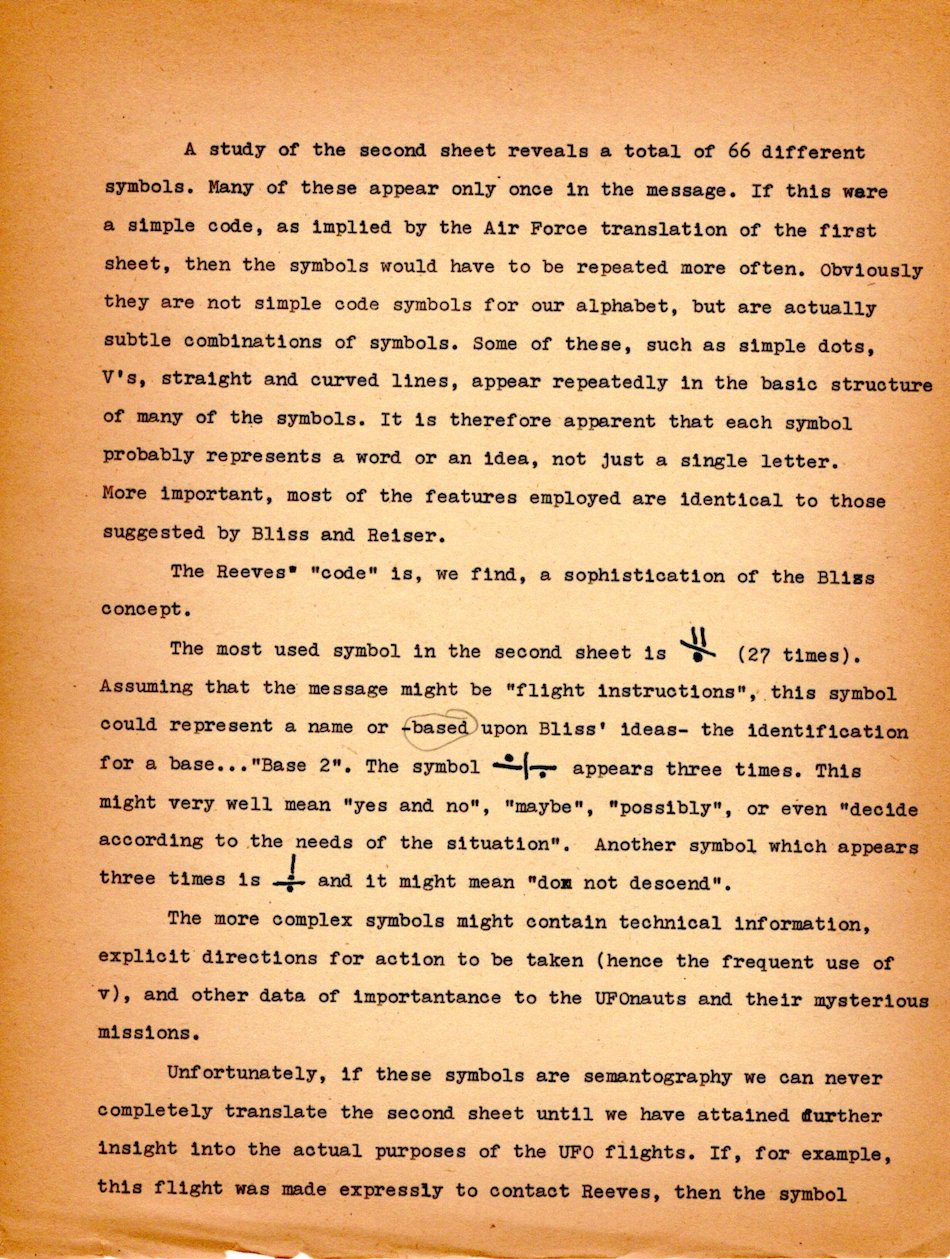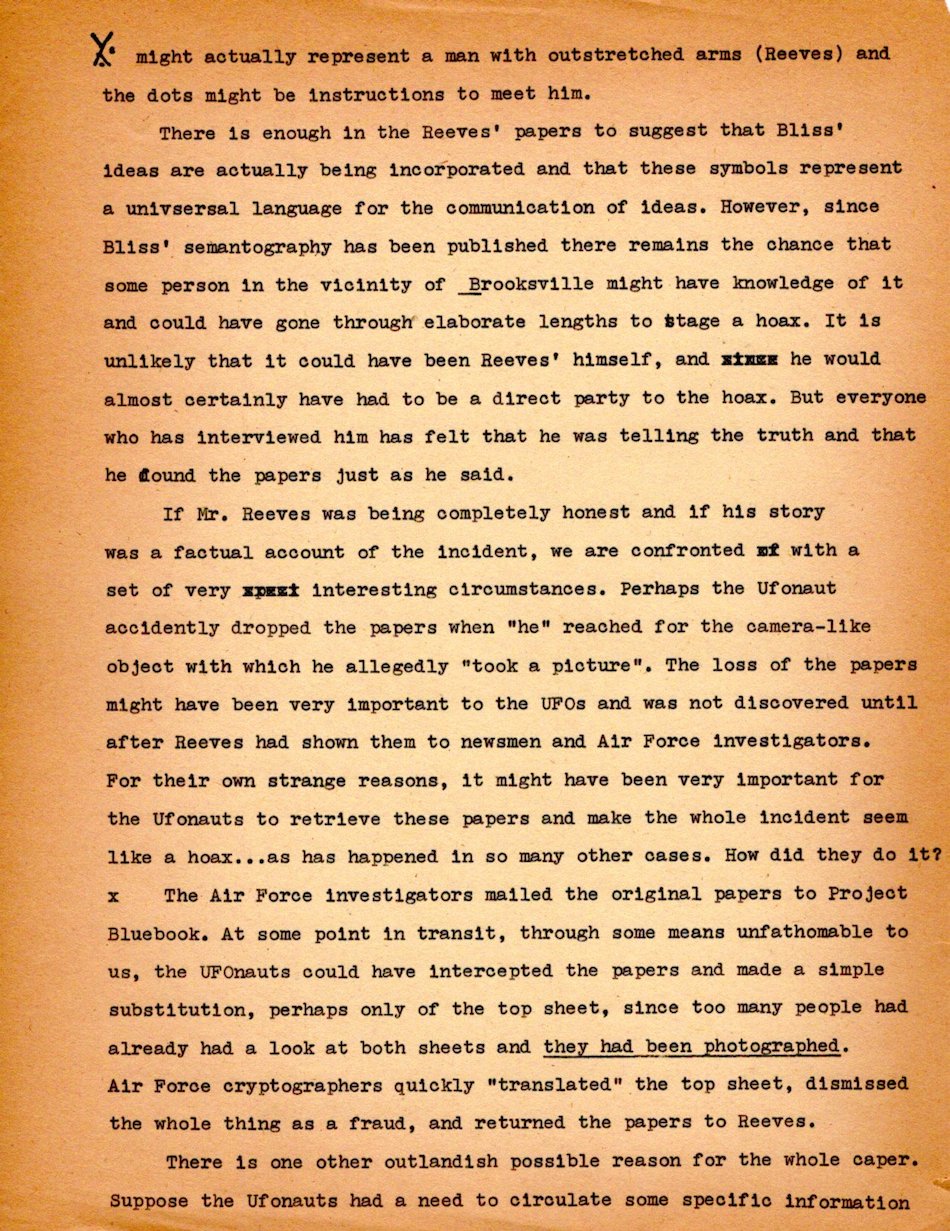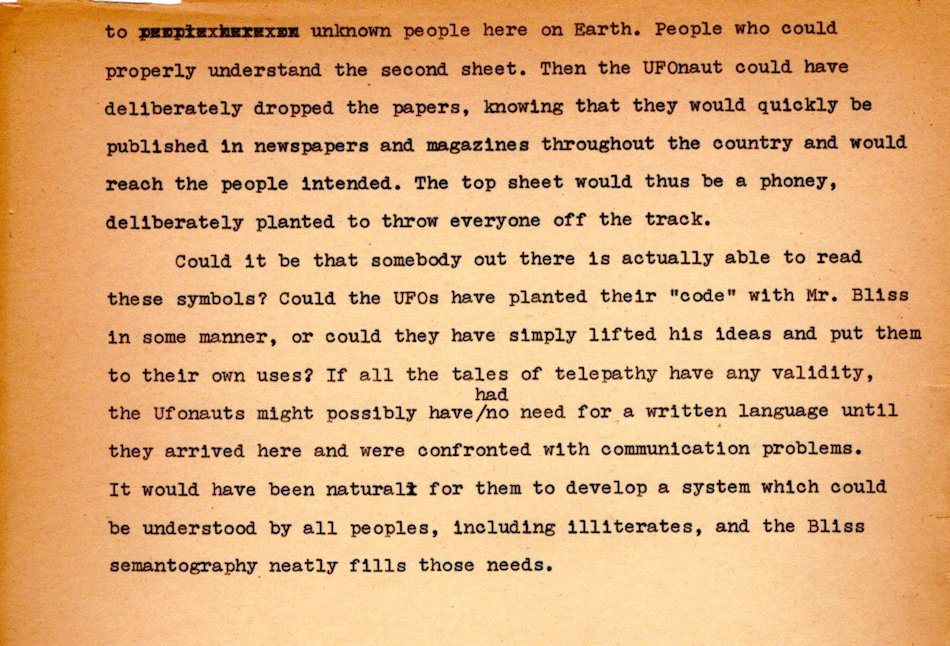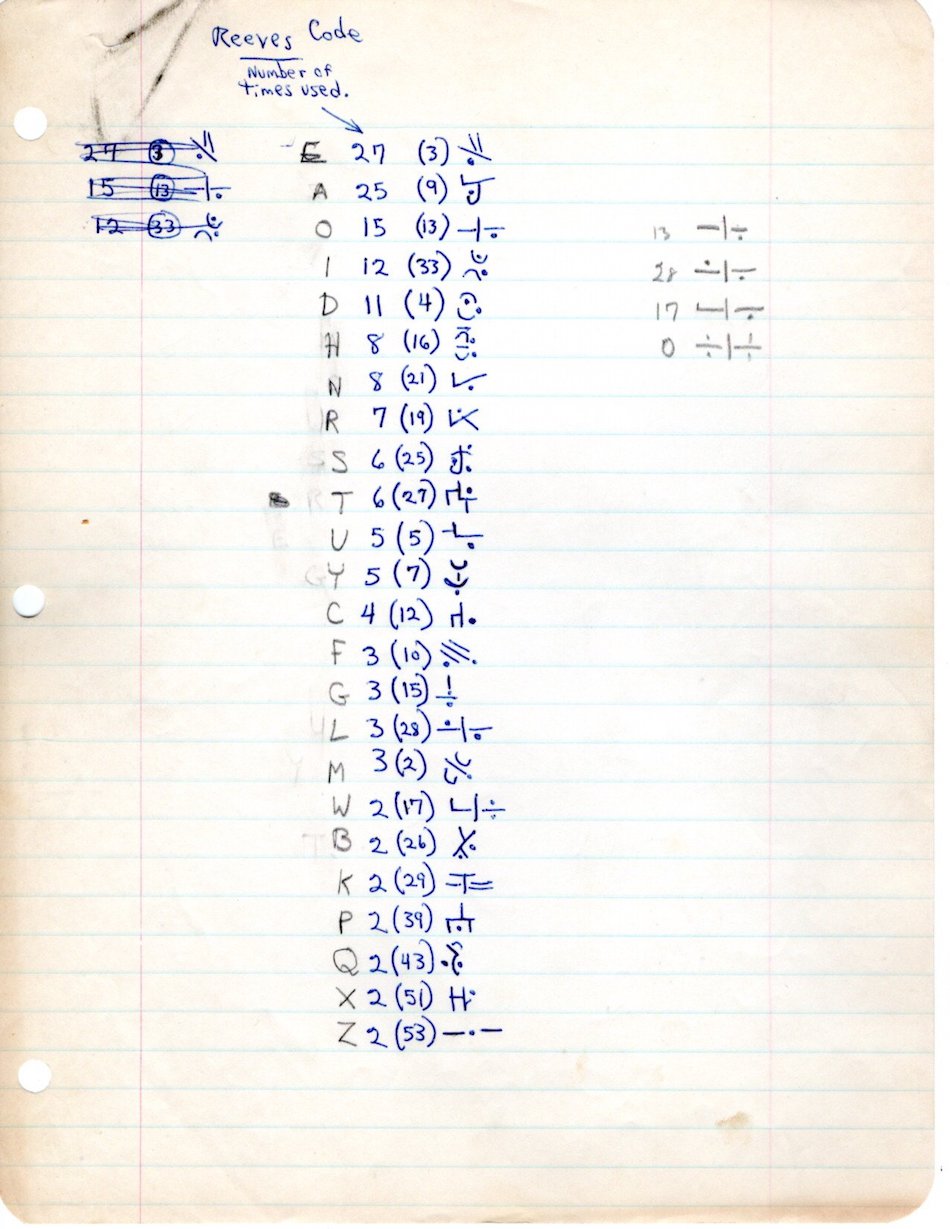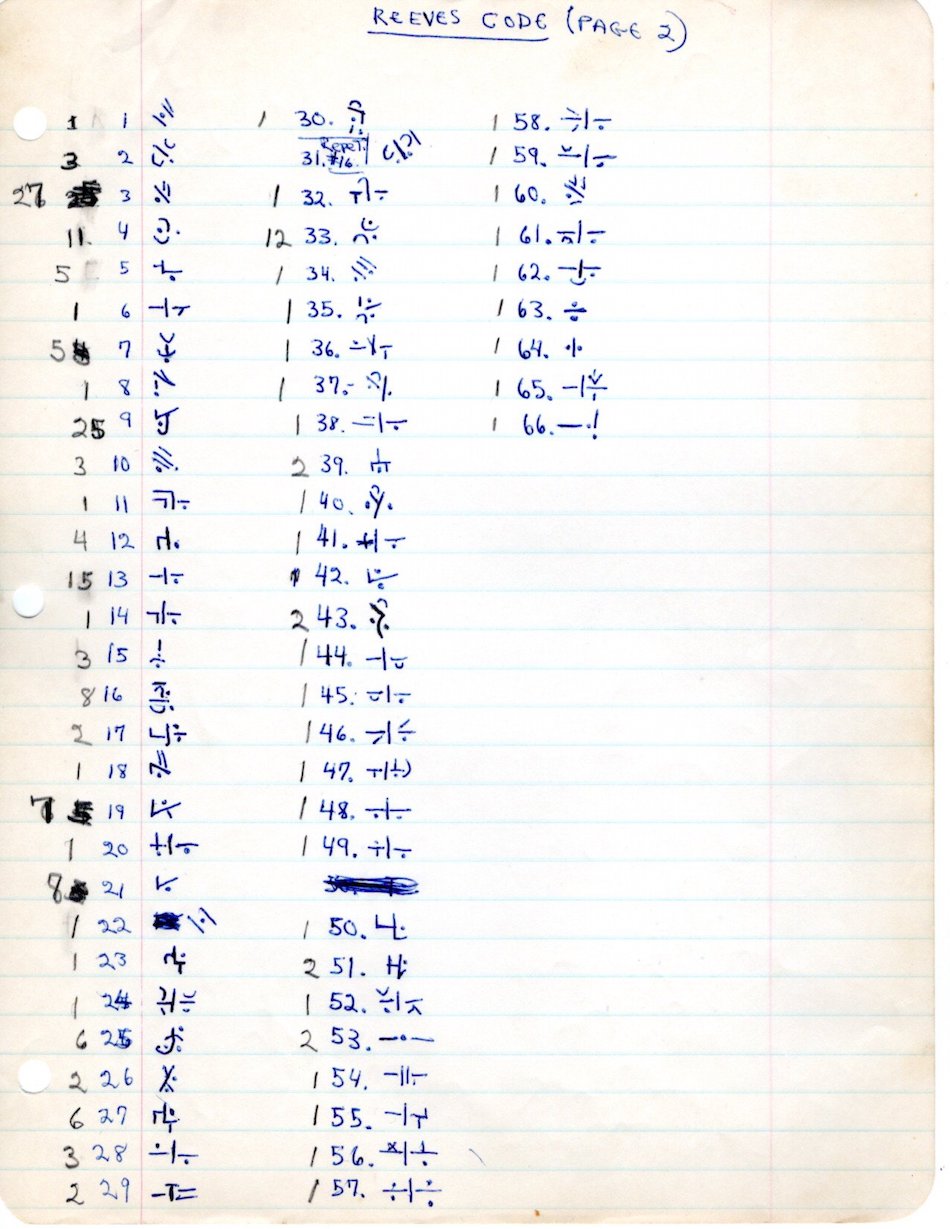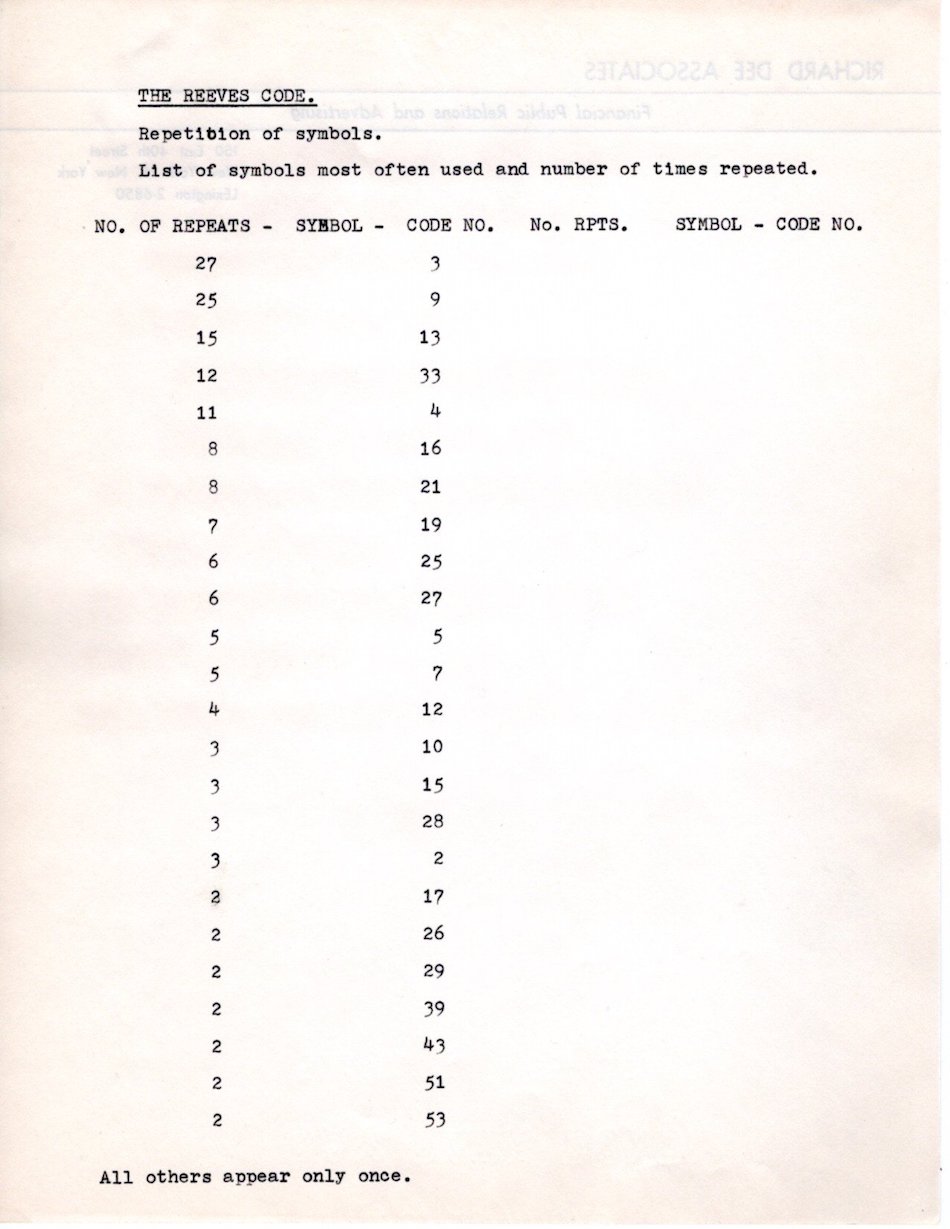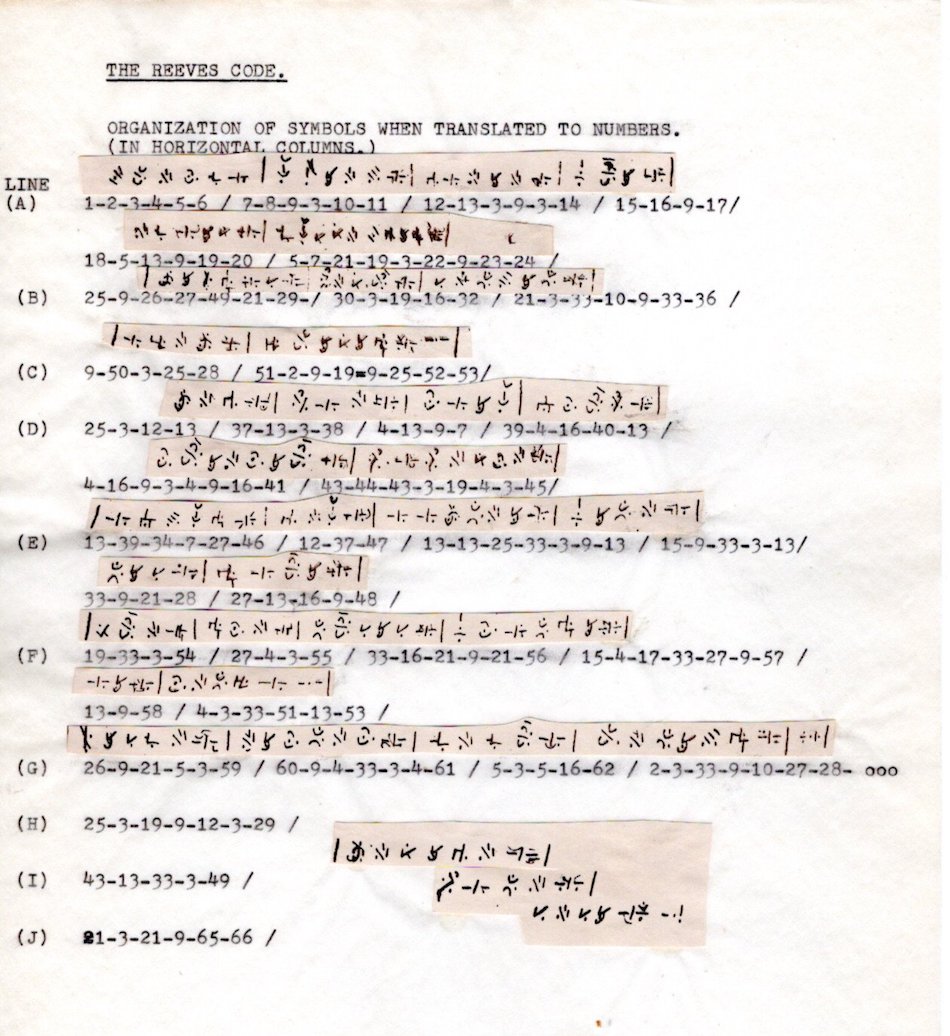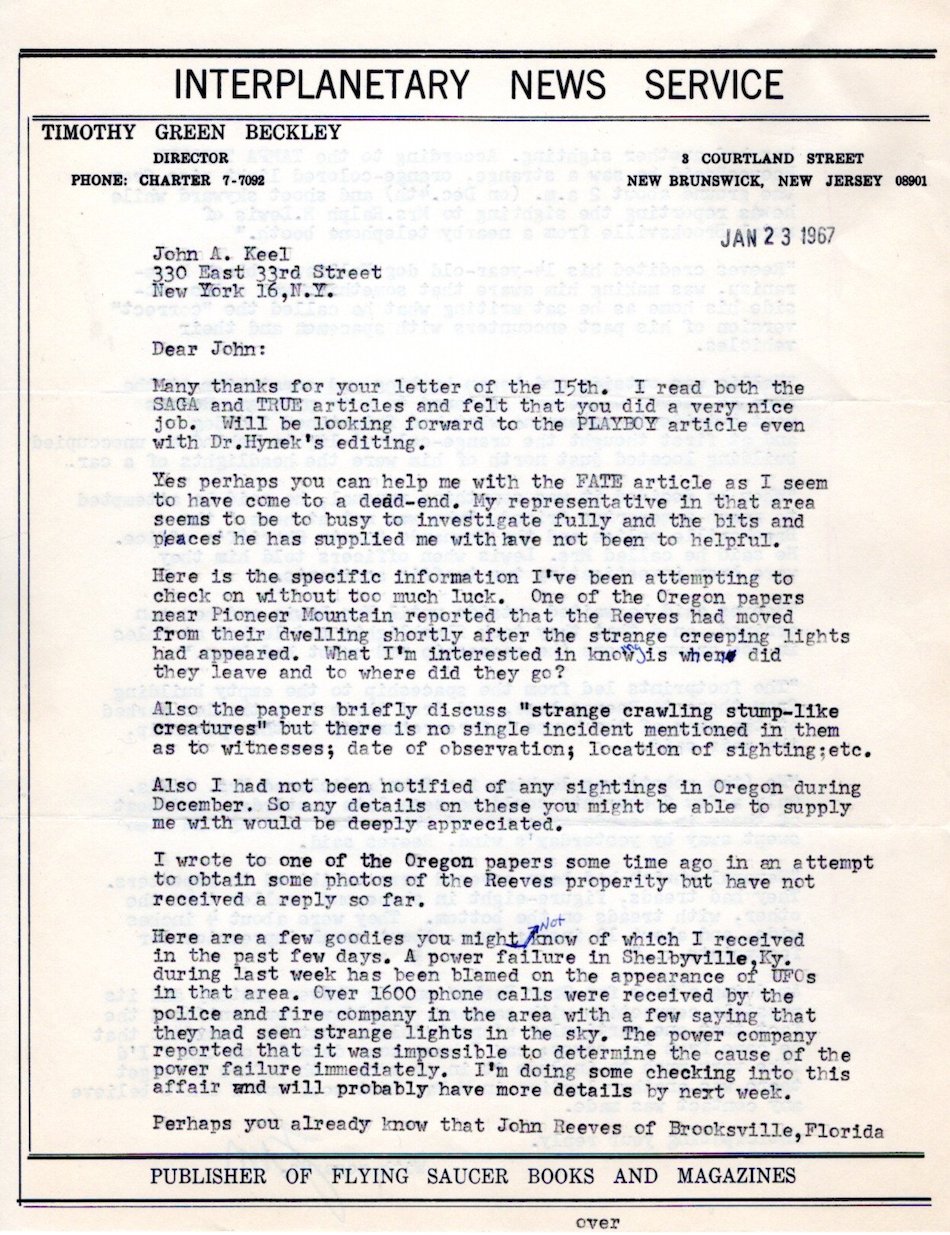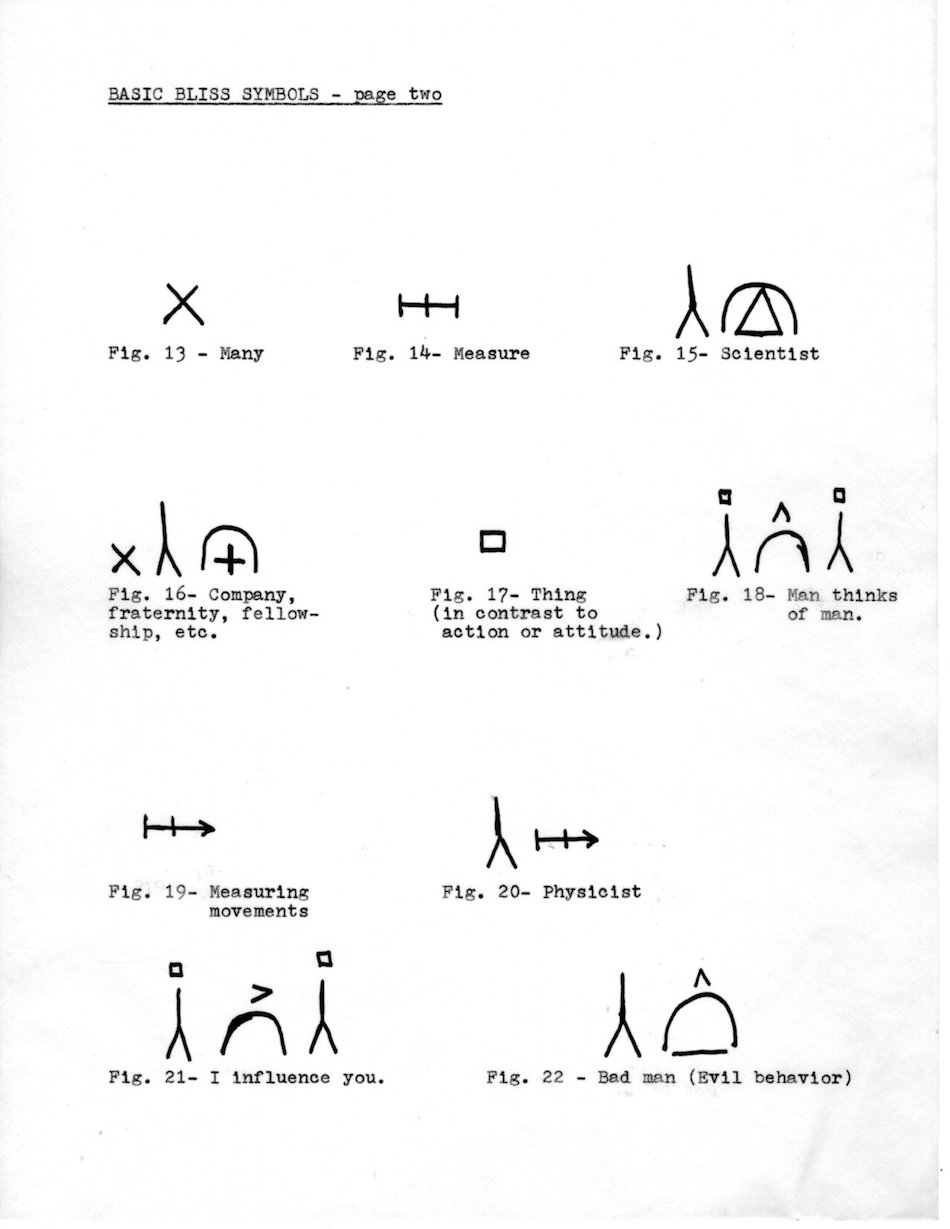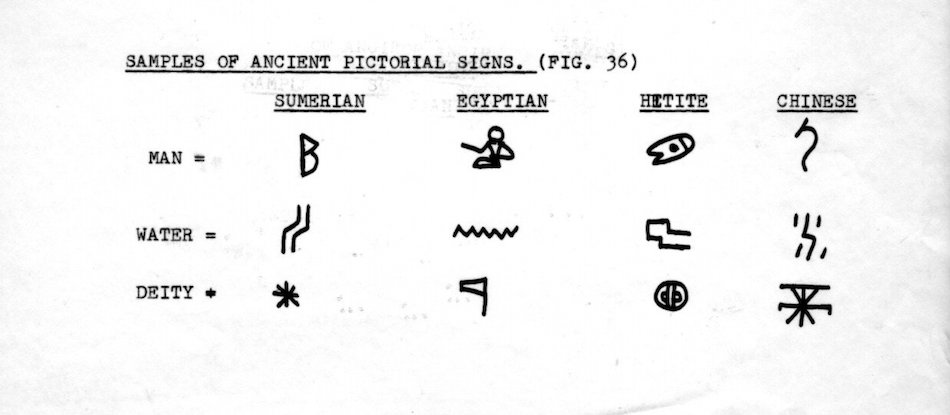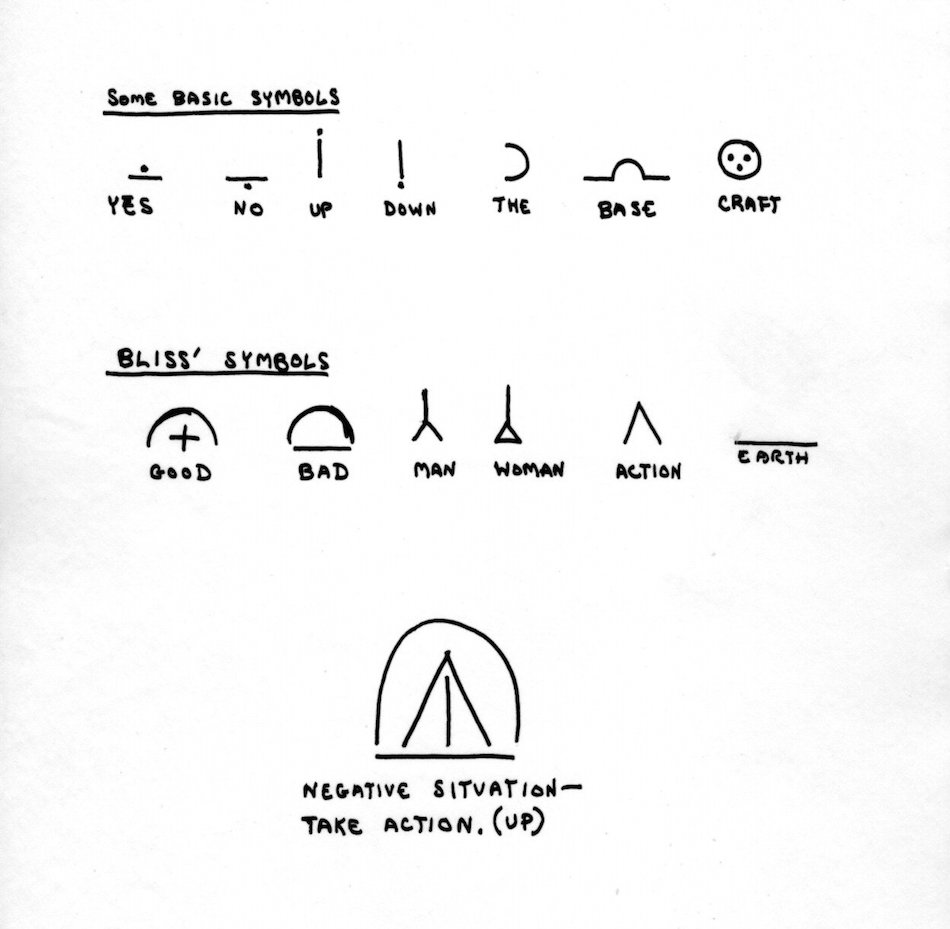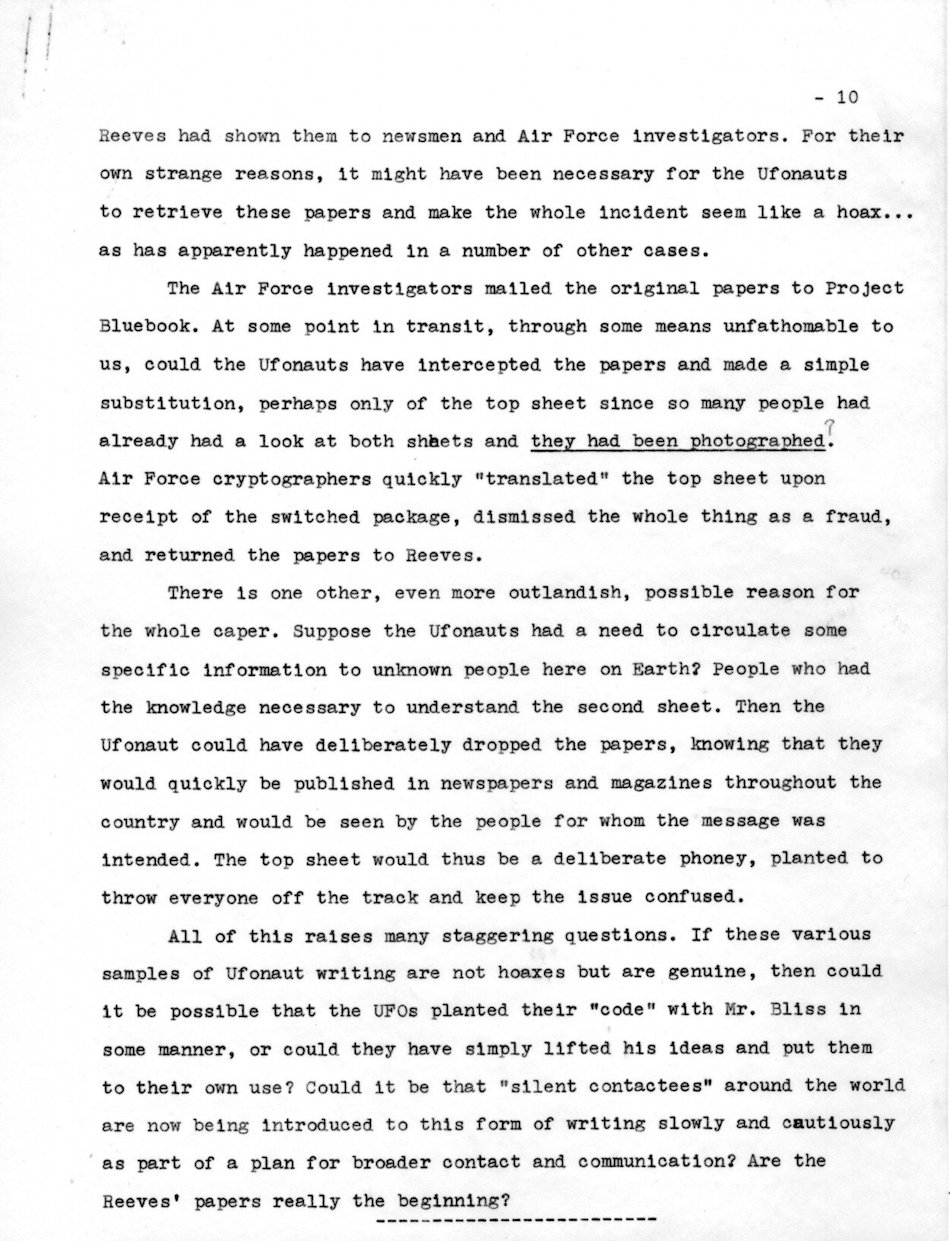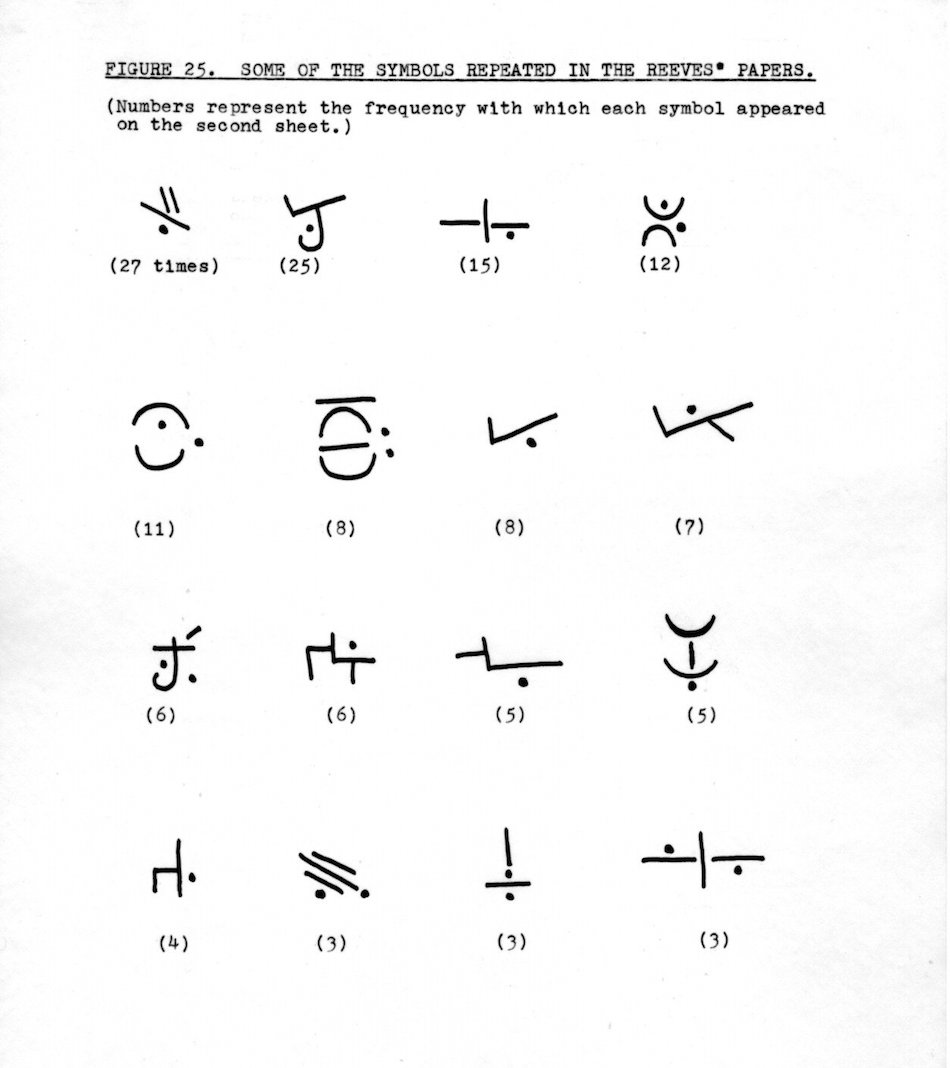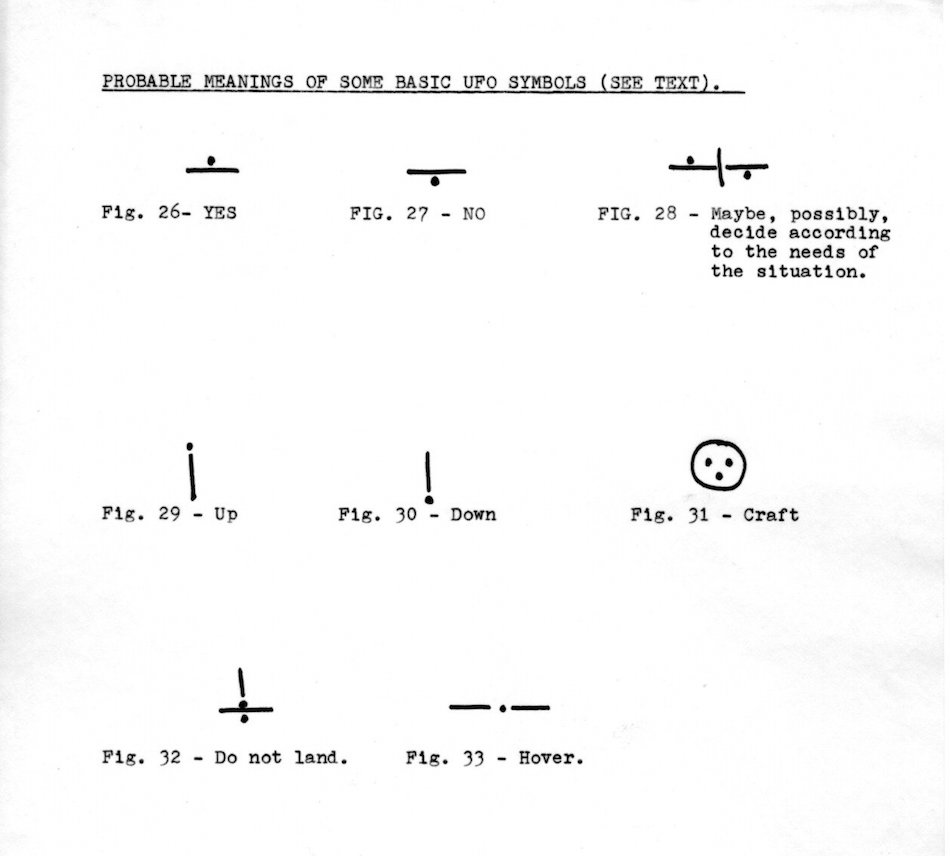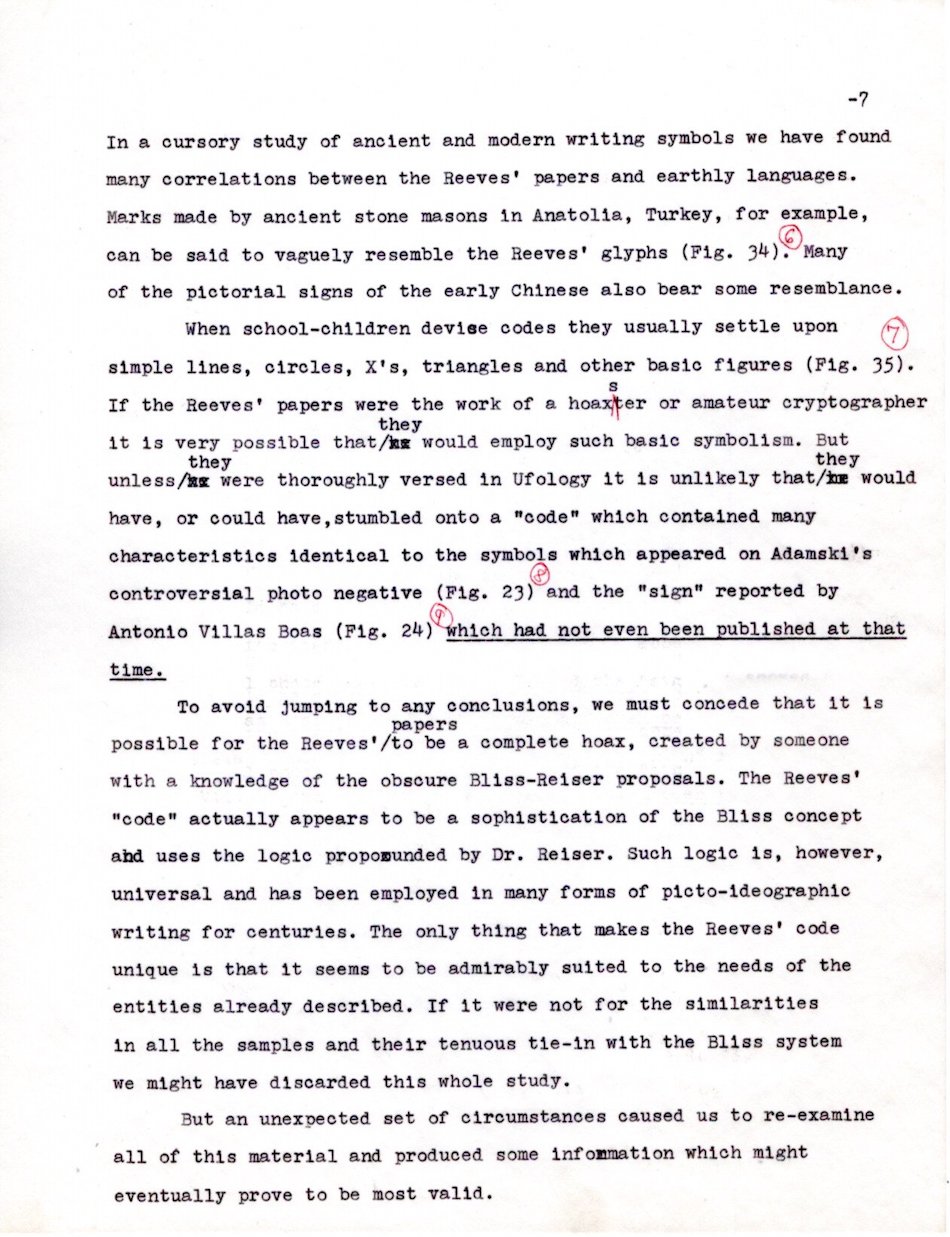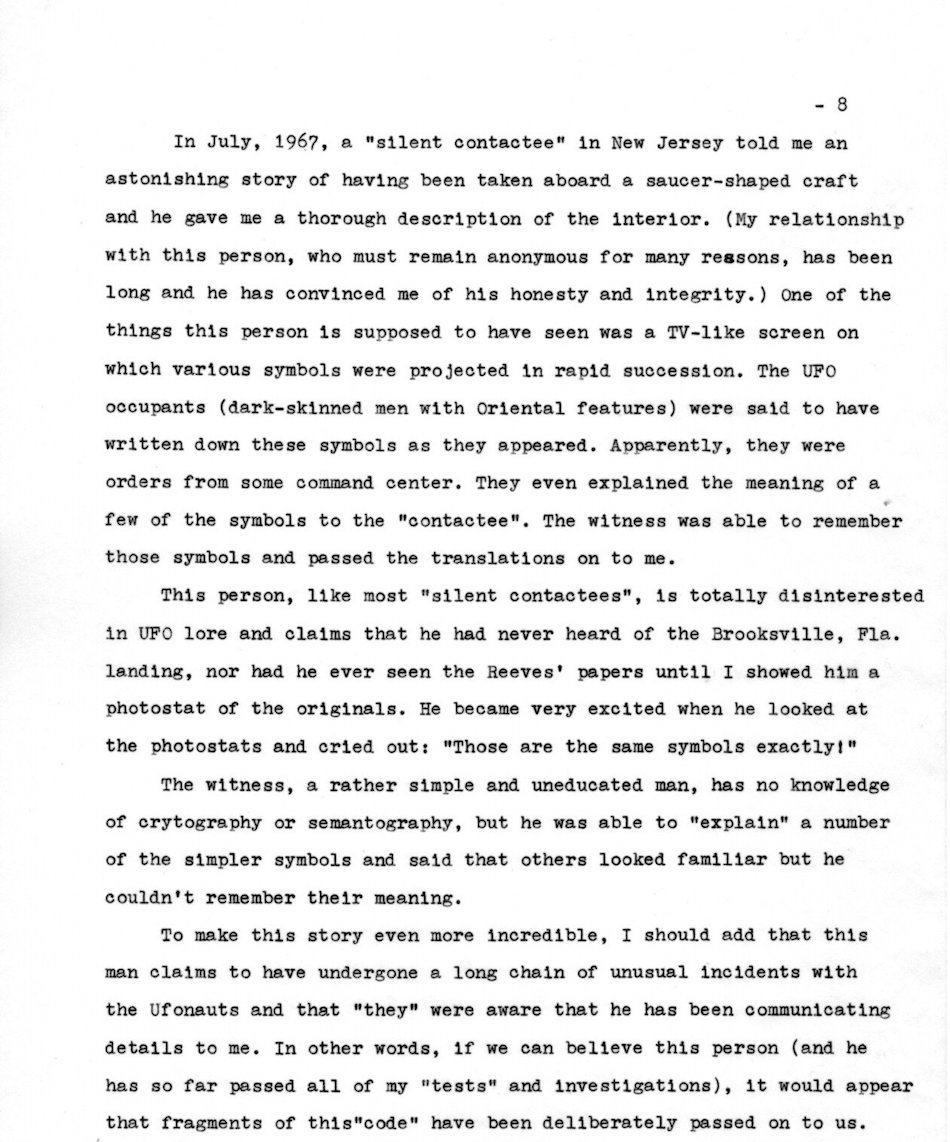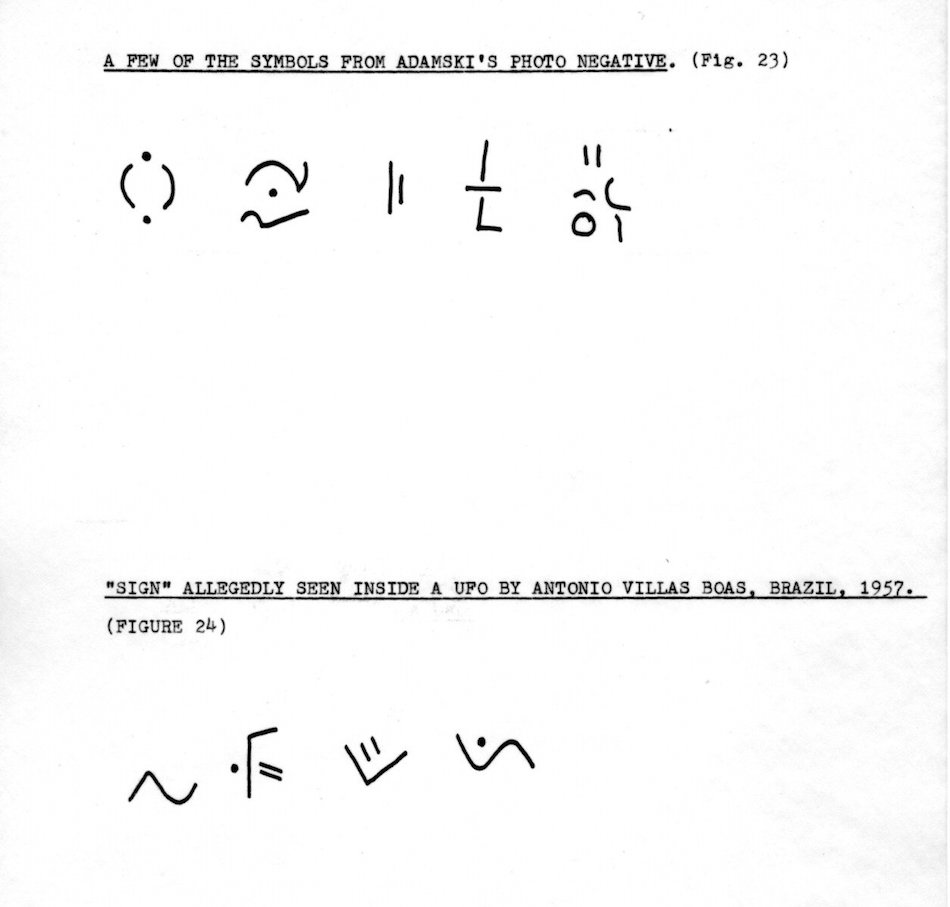Bormujos Here are the next four pages of John’s “General Chart: Sightings of Unidentified Flying Objects reported January 15-21, 1967.” (There are eleven pages, counting the cover sheet.) It seems to be an attempt to establish criteria for listing and organizing sightings. In 1967, John was still new to ufology, and probably trying to figure out how to proceed.
June 16, 2019
June 11, 2019
General Chart (1)
Tucked into John’s Reeves file is a “General Chart: Sightings of Unidentified Flying Objects reported January 15-21, 1967.” He meticulously listed the UFO sightings for one week in January, 1967, with dates, times, locations, witnesses, descriptions, and Air Force explanations. I assume he drew it up as a model of how to organize reports. The title page suggests he may have meant it for other researchers, although I don’t know if he sent it out. At any rate, here are the first pages.
June 2, 2019
The Reeves Papers (11)
These last few pages from John’s Reeves file are another early draft of the article, mostly concerning his work on the second sheet. He details his attempts at decipherment, step by step, before abandoning this draft. Apparently, he then turned to the Bliss symbols as a more likely explanation. In passing, he also suggests that the first sheet was a hoax by the Air Force, and that they suppressed the real first sheet. At any rate, here’s where the Reeves file ends.
May 28, 2019
The Reeves Papers (10)
These next pages from John’s file on the “Reeves Papers” include a report on John Reeves’s alleged sighting and his sheets of alien writing, with a diagram of the UFO (the caption is cut off on the original). The report is uncredited, but appears to be from the Air Force; it concludes that the sighting was a hoax. Also below are more of John Keel’s attempts to find a cipher in the second sheet, corresponding to the one in the first. He couldn’t find one, which leaves that sheet still undeciphered.
May 19, 2019
The Reeves Papers (9)
Also in the Reeves file is this rough draft of part of the article, concerning John’s speculations on the second sheet, and his interview with one of his silent contactees. There’s also a curious note about a peculiar phone call directing John to the Bliss symbols, which John cut from his later draft.
May 12, 2019
The Reeves Papers (8)
The first of the Reeves pages turned out to be a simple substitution cipher. Naturally, John analyzed the second sheet to see if it was also a cipher (he couldn’t find one). Here are some of his worksheets.
May 6, 2019
The Reeves Papers (7)
Included in John’s file on the Reeves symbols is a letter from Timothy Green Beckley, who reports another sighting by John Reeves; this one took place on December 4, 1966, and apparently involved a robot. Beckley also discusses another UFO case in Oregon, involving a different Reeves family. It must have been a bad year to be a Reeves.
April 28, 2019
The Reeves Papers (6)
John included in the file several pictures that he didn’t refer to in the text: a photo of some alien writing credited to George Adamski, another page of Bliss symbols, comparisons of “ancient pictorial signs,” and another page of symbols with an interpretation of the Socorro insignia. Next, we’ll have John’s attempts to analyze and decipher the second Reeves sheet.
April 21, 2019
The Reeves Papers (5)
“The Reeves Papers: A Modern Rosetta Stone?” concludes with some speculations on the purpose of the two sheets, particularly given that the first seems to be a simple substitution cipher, and the second doesn’t. John also guesses at the meaning of a few of the symbols, using the Bliss system.
The article seems to end here, but the file contains other pages of drawings not mentioned in the text, some incomplete earlier drafts, and a number of valiant (although unsuccessful) attempts to decipher the second sheet. So, we’ll continue with those next.
April 14, 2019
The Reeves Papers (4)
Below are the next two pages of John’s article “The Reeves Papers: A Modern Rosetta Stone?”, his analysis of the supposed alien writing reported by John Reeves in i965, followed by the illustrations indicated in the text. Here he considers the possibility of a hoax and the universality of simple signs. He then reports corroboration from one his “silent contactees.”


